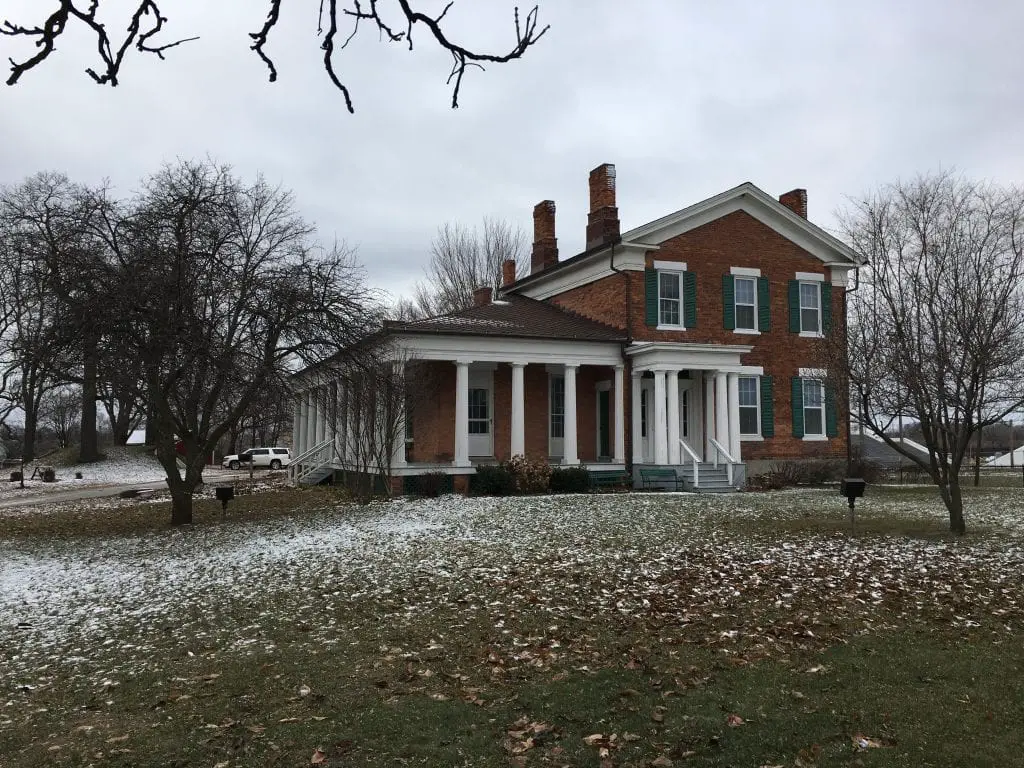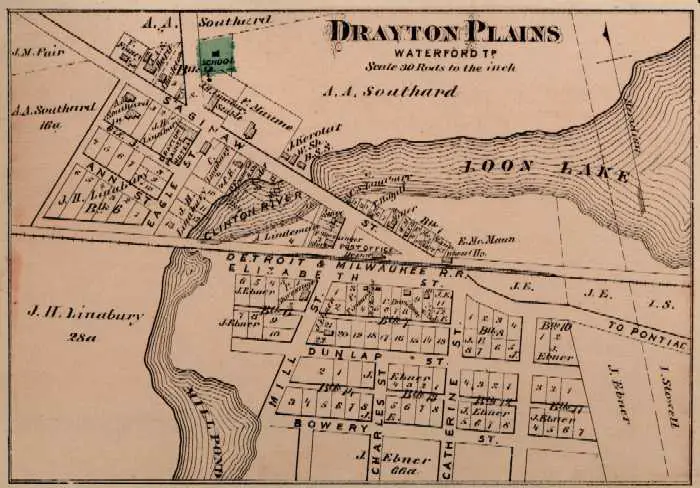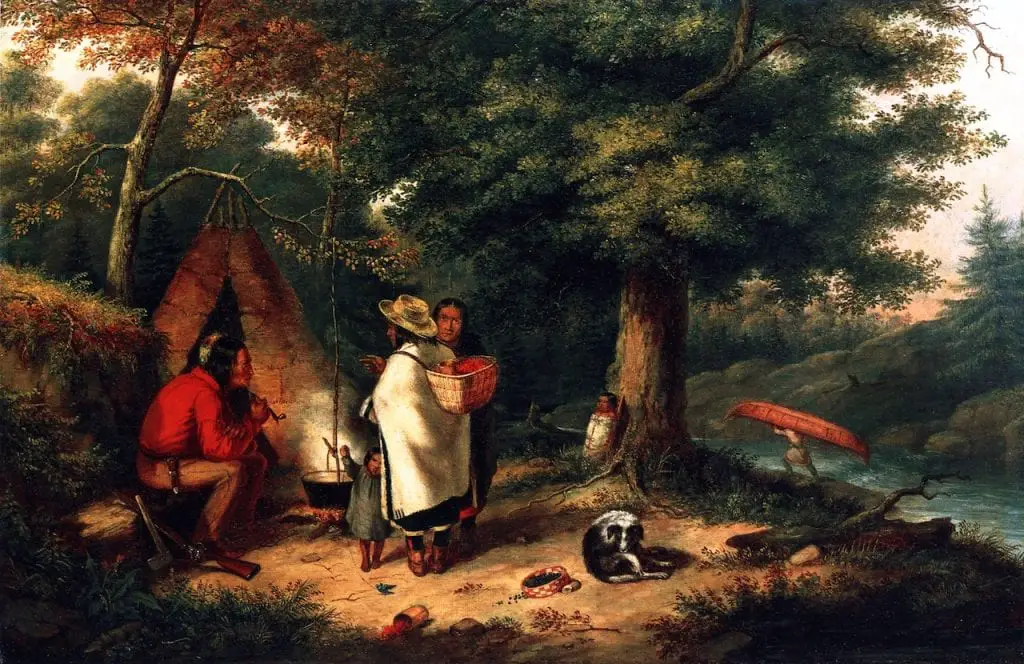Of all the named Indian trails in Michigan, the Saginaw Trail is the oldest and indeed the most traveled in the trail system. Originating from the Straits of Detroit, this Sauk trail heads northwest through Pontiac, Flint, and supposedly terminating in Saginaw.
Saginaw was a significant native population and cultural center in Michigan, with over 109 Chippewa Indian villages recorded. Saginaw was at a crossroads of numerous rivers and the base of Saginaw Bay. From here, natives could travel directly to the other primary hunting and trading points in Michigan. Some researchers denote the Saginaw Trail as continuing to the Traverse Bay area, sharing the route of the Mackinac Trail.
The Major Interior Indian Trail Through Michigan

When the French explorers and fur traders arrived, they found the trail useful as a trade route into the interior of Michigan. Tribes utilized the trail to travel to eastern forts and outposts to receive treaty payments from the British. Likewise, the French fur traders established themselves at key trail points for trading. In 1818, the Michigan Territorial Government approved the construction of a turnpike that led from Saginaw to Pontiac. Approval was granted to extend the road from Pontiac to Detroit in 1822. This turnpike was hardly better than a swampy sea of mud. It was described by William McCormick, who traveled the route in 1831 —“the mud was so deep one span of horses could not draw the wagon through.”
The Michigan territory did not have funds to continue improving the Saginaw Turnpike. In 1827 requests to the US Government for funds were approved, and the road was completed in 1841.
Saginaw Trail Historical Monument

The Saginaw Trail running from Detroit to Saginaw through Pontiac and Flint was originally an Indian trail. In 1816 Michigan Territorial government authorized the building of a road from Detroit to Saginaw along the trail. Part of the trail in Oakland County is now Woodward Avenue and Dixie Highway. Evidence of the original Saginaw Trail path through Royal Oak is still visible as a Depression in the ground running northwesterly across the property adjacent to the John Almon Starr House.
Inscription on the Historical Monument
Significant Historical Spots Along the Saginaw Trail

Straits of Detroit – The term Detroit has named by the early French explorers denoted the entire length river system from Lake Huron to Lake Erie. In 1701 Cadillac established Fort Detroit on the high shore of the Detroit River. This area was also known as a terminating point for several trails that crisscrossed.

Pontiac – Michigan Governor’s Mansion – Moses Wisner was governor of Michigan from 1859 to 1861. He was born June 3, 1813, in New York. He came to Michigan in 1837. In 1841 he was admitted to the Bar and practiced law until the Civil War. By 1862 Colonel Wisner took command of the 22nd Michigan Infantry. In the same year, the regiment went to Kentucky where Wisner died on January 5, 1863.
This property was purchased by Moses Wisner in 1844, served as the Michigan Governor’s Mansion from 1859-1861. Angelina Hascall Wisner, wife of Moses made it her home until her death in 1905, and members of the Wisner family resided here until 1945 when it was purchased by the Oakland County Historical Foundation.

Drayton Plains – In 1822 Jonathan Perry, Harvey, and Austin Durfee settled near where Loon lake enters into the Clinton River and named it Drayton Plains. English miller Daniel Windiate built the first gristmill called Drayton Mill named for his childhood home in England. The dam and gristmill were constructed in 1837. The Drayton Plains Hotel opened on the Saginaw Trail, later named Dixie Highway, across from Sashabaw Road on February 2, 1839. This hotel was an early stagecoach stop along the Saginaw Trail. Daniel Snyder Lord was the manager and tavern keeper in 1845. The hotel looks to have been a focal point of the social and political life of Waterford. There are numerous listings of Democratic and Republican caucus meetings at the hotel. The lodge also hosted Friday night oyster dinners and dancing for $1.
The hotel was located near the Drayton Plains depot and across from Loon lake. The railroad helped give rise to making Waterford a resort area with its many lakes easily accessible to summer vacationers from Detroit.

Grand Traverse of the Flint – The spot where the trail crossed the Flint River was known as the Grand Traverse or great crossing place. This rendezvous spot is described as an open plain lying in the bend of the river. The area was named Muscatawingh. In Chippewa, this means ‘the plain burned over’. Gardens were also known to be in this area and it was known as a camping ground. The city of Flint Michigan grew up around this crossing.
The Story’s on the Saginaw Trail

“Aristocracy on the Saginaw Trail: Tocqueville in Michigan“, is considered one of the best stories about traveling the Saginaw Trail in 1839. The story is about two aristocrats from France who want to explore America’s wilderness in 1831. The descriptions and detail of their travels from Detroit to Saginaw is a fascinating glimpse of life as a settler and experience among the Chippewa.
Their wish is to go to Saginaw. Tocqueville deemed the area the last vestige of civilization.
Do you have any idea what you’re in for? . . . Do you know that Saginaw is the last inhabited place between here and the Pacific Ocean? That between here and Saginaw there’s nothing but wilderness and trackless waste? Have you given any thought to forests rife with Indians and mosquitoes? Do you realize that you’ll have to spend at least one night sleeping on the damp ground? Have you thought about the fever? Can you find your way in the wilderness, or will you lose yourselves in the labyrinth of our forests?
Alexis de Tocqueville
Sources
Related Reading
- Dioxin Clean-Up in Saginaw Bay Watershed
- Shore Indian Trail – Hull’s Trace
- Michigan Indian Trails
- The Travels of Henry Schoolcraft to Charity Island 1820
- The Travels of Pioneer Jacob Parkhurst





